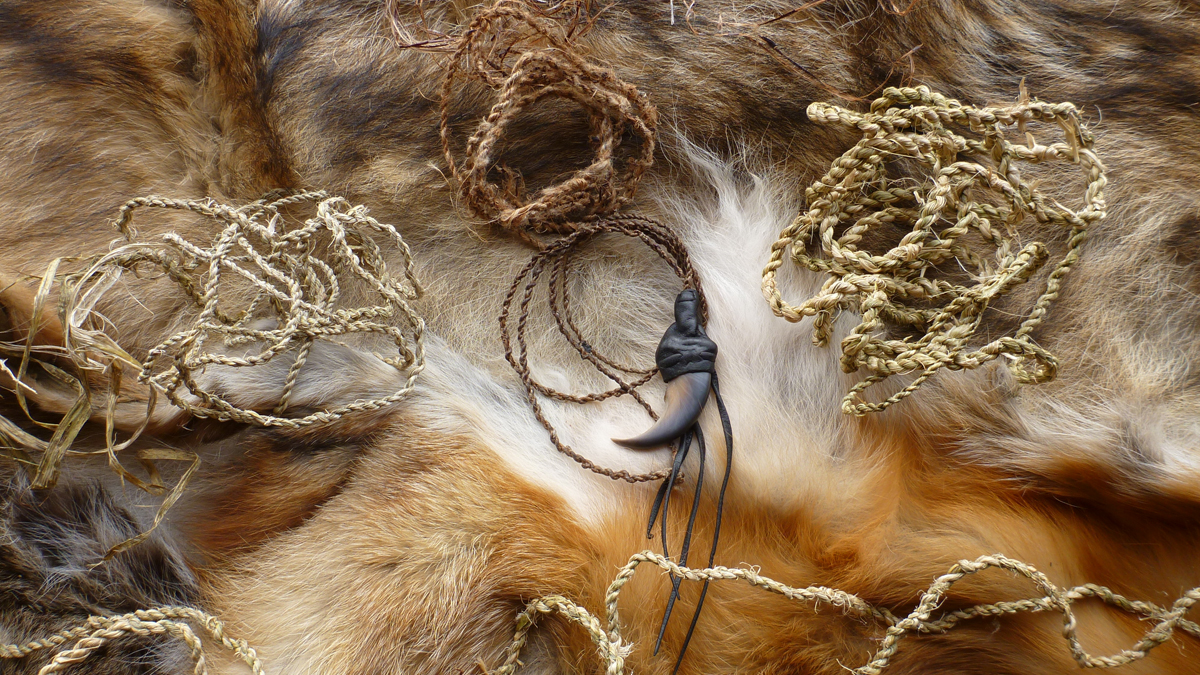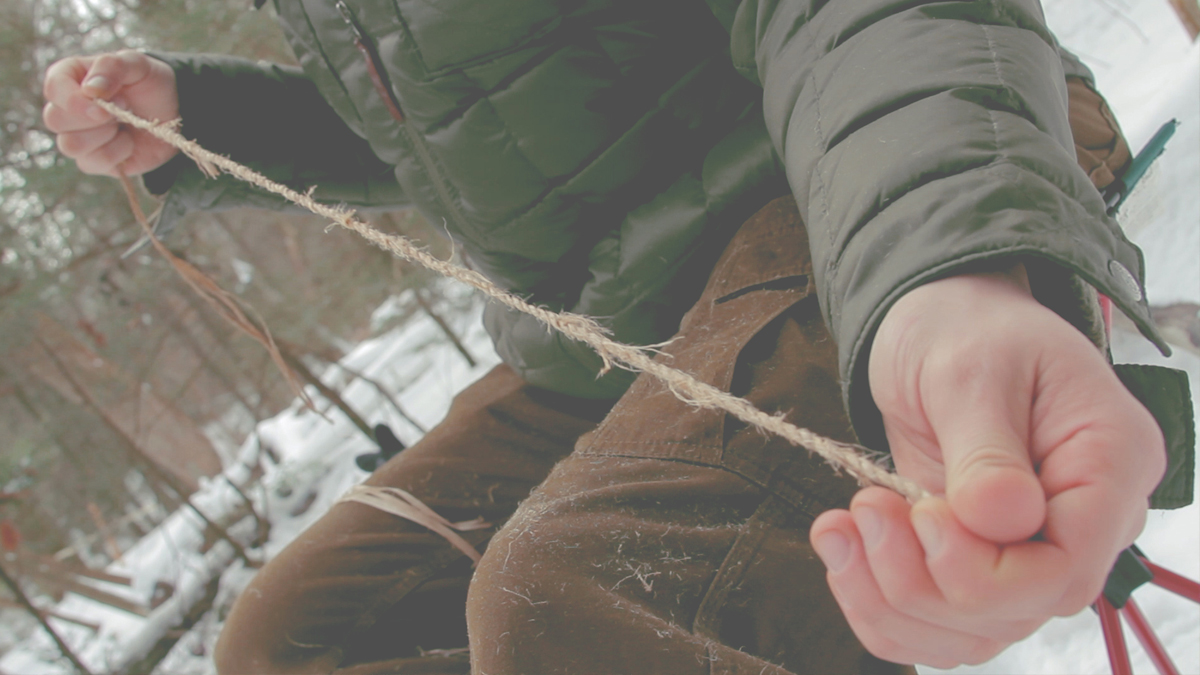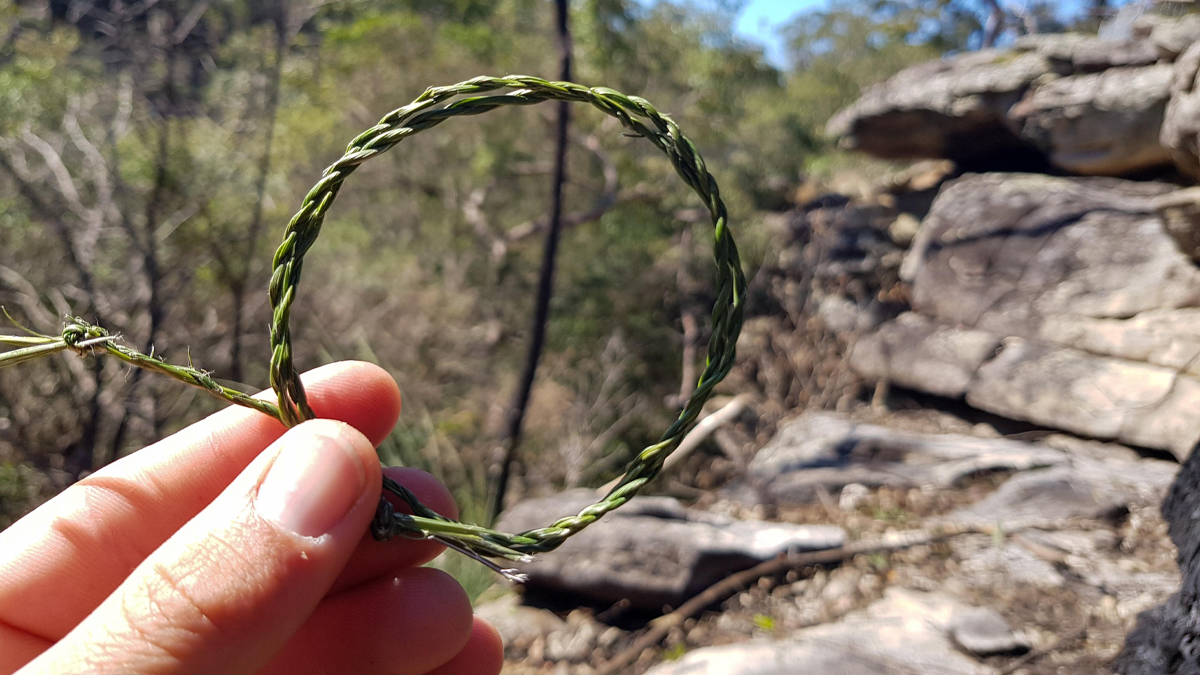on
Cordage — thread, string or rope — is all but indispensable in a survival situation. It can be used for bowstrings, fishing lines, trap triggers, snares, and lashings. Most people would likely despair if forced to make string or make rope. However, suitable natural materials are plentiful in most places and the techniques required for making cordage are actually quite simple to master.
Material Sources
Trees
Just about any strong, flexible fiber can be used to produce good cordage. The dried inner bark of most trees, for example, will supply you with workable raw material. It’s best to look for trees with dead bark, and strip off long sections of the fibrous cambium layer between the wood and the outer bark. If you’re in a true survival situation, you can even strip sections of the inner bark from living trees (it’ll be easiest to do in the spring, when the sap is running) and dry them. Be sure, though, to take only a few thin strips from any one trunk (Don’t cut all the way around it. Doing so can kill the tree). Should you have trouble separating the inner from the outer bark, just soak the strips in warm or boiling water until the fibers come apart easily.
Fibrous Plants
The dried inner skin of the stalks of fibrous plants will also serve your purpose, as will fibrous leaves and even dried grasses. When working with pithy plants, such as dogbane and milkweed, you may be able to strip the material you need from the stalk in long ribbons. If the plant is dry, though, you’d be better advised to crush and open up the stalk. Then break off short sections of the woody core, leaving a long ribbon of fibers in your hand. If you come across a supply of non-pithy plants, such as nettles and rushes, the best way to remove the fibers is by placing a dried stalk on a piece of wood and pounding it with a rounded rock. (Don’t use a sharp instrument, as it could cut the fibers.) The material from annual plants will, of course, be shorter than that gathered from trees, but by splicing the fibers together, you can still make cordage of almost any length or thickness.
Animal Sinew

Animal sinew can be used to produce exceptionally strong rope or twine. In fact, a strand of it no thicker than carpet thread can hold the weight of an average man. Because of its strength, sinew is especially good for making bowstrings, fishing lines- but not nets, snares, wrappings, and threads. Another useful property of sinew is that, when wetted with saliva before wrapping, it shrinks and dries as hard as glue. As a result, knotting the ends of a sinew wrapping is sometimes unnecessary. (Rawhide is very strong, too, and also shrinks as it dries.)
The longest sinew is found in the white cords that run along either side of an animal’s backbone, but you can get usable lengths from the tendons and ligaments attached to muscles and bones, as well. Simply cut out the sinew, remove its protective sheath, and clean and dry it. (When dry, it’ll be very hard and brittle.) To separate the individual fibers, pound each strand with a rock, as you would for plant stalks, then put it in hot water.
Creating Cordage
Once you have a supply of raw material, you’ll have to decide how thick and long your finished cordage will have to be. If all you need is a piece of wilderness dental floss or a trap trigger, you might get by with only a few fibers. In most cases, though, you’ll want something stronger — and strength is primarily the result of wrapping fibers together. This will likely require that you break down the original material a little more than you have to this point.
If you’re working with a ribbon of bark or leaf material, roll it between your palms (for better friction, dampen your skin) or against the leg of your pants to separate the fibers. Work along the entire length of the strip until you’ve gotten rid of any nonfibrous matter and have a long, thin bundle of “threads.”

Subscribe for FREE to Continue Reading
Subscribe for FREE to get access to all of our premium content and get an email when new content is added.
The purpose of this blog is to present preparedness ideas for those that are brand new to the idea of being prepared for various disasters. We will also provide information for experienced ‘preppers’.
Get access to premium content and more!





